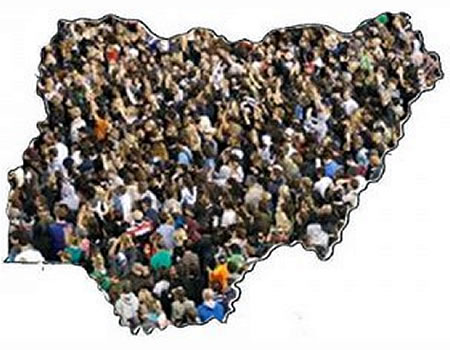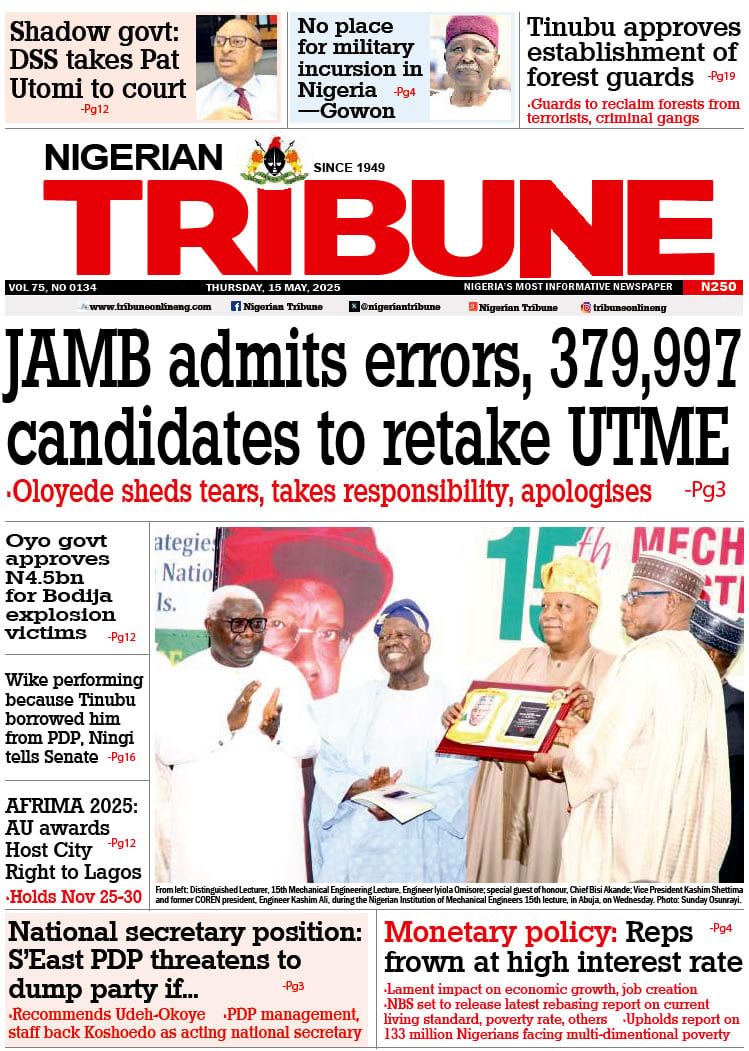For the upper middle income countries like South Africa or Jamaica, poverty benchmark is $5.50 a day while for high income countries; it is now $21.70 per day.
Before this new classification, the Nigeria Bureau of Statistics (NBS) said 112 Nigerians were living below poverty level of $2 per day. With this new classification, however, Nigerians living in poverty might have ballooned to over 90 percent of the 196 million population.
According to the Nigeria Immigration Service (NIS), no fewer than 10,000 Nigerians died between January and May 2017 while trying to illegally migrate through the Mediterranean Sea and the deserts. These Nigerians were on their way to Europe to escape unemployment and poverty.
According to the NIS Assistant Comptroller, Training and Manpower, Mr. Maroof Giwa, 4,900 died in the Mediterranean Sea while the rest died while going through the desert in their bid to cross to Europe.
In November 2017, a report by International Organisation for Migration (IOM) revealed how Nigerian migrants were sold for $400 in Libya. CNN also released a documentary detailing a well-organised syndicate where male immigrants were sold to work in farms and mines while ladies were sold as sex workers. Despite the unfavourable conditions, however, many Nigerians still prefer to live abroad, even in Libya, to returning home.
Charge D’Affaires of Nigeria in Libya, Mr. Illiya Fachano, in an interview, said Nigerians in Libya were refusing to be repatriated in spite of the unfavourable conditions. In addition to those rescued from Libya, thousands of other Nigerians have also been deported from Europe and Asia on account of not possessing required visas. On arrival, many of these Nigerians cite absence of jobs at home and the prospect of better living conditions as their reason for leaving their fatherland.
According to the General Medical Council (GMC) of United Kingdom, as of July 2017, over 4,765 Nigerian medical doctors were working in that country. This is in spite of the fact that Nigeria has a 1 to 3,500 doctor to patient ratio. An official of the Nigeria Medical Association, Olayiwola Odusote, was quoted to have said that at least 40,000 of the 75,000 registered Nigerian medical doctors are practising outside Nigeria. Many of those who qualified more than six years ago in Nigeria are still seeking employment, he said.
With 34 million out of total labour force population of 85.1 million not fully employed by September 2017, there are indications that a more distressing unemployment figures are set to be released by the NBS when it releases latest figures currently being gathered by the end of September this year. And issues of employment and poverty are likely to feature prominently on the agenda of political parties campaigning for the 2019 general elections.
A report by the Brooklyn Institution ranks Nigeria as having the highest number of poor people in the world. It quoted data from the World Poverty Clock that showed that Nigeria has over 87 million people living in poverty. Six Nigerians fall into poverty every minute, the report indicated. “What is more, extreme poverty is growing by six people every minute, while poverty in India continues to fall. In fact, by the end of 2018 in Africa as a whole, there will be about 2.2 million more people living in extreme poverty than there are today,” the report published at the end of May 2018 warned.
This, however, is even a conservative figure compared with the NBS report of 2016, which disclosed that 112 million Nigerians live below poverty level.
NBS has been unable to either gather or publish labour force statistics beyond that of Q3 2017 due to paucity of funds according to the Statistician-General and Chief Executive Officer of NBS, Mr. Yemi Kale, who spoke exclusively with Sunday Tribune.
He was, however, under no illusion that the new figures will present any succour. According to him, Nigeria must create four million new jobs annually to begin to make any dent in the ballooning figures. This, he said, is exclusive of any loss of already existing jobs.
“That’s going to represent quite a challenge. Today, after last year’s recession, unemployment rate is 18.8 per cent; it used to be 14 per cent last year, which means that when there’s a population growth of 3 per cent, you have a negative per capita growth. Therefore, you need much higher growth, hence the importance of implementing the economic recovery and growth plan and those policies to try to boost growth way above the three percent rate that would be necessary to just keep per capita GDP constant. We need to see growth rates that we have seen in the past of six or seven percent.”
But the Senior Special Assistant to the President on Media and Publicity, Garba Shehu, had earlier stated that government had created at least nine million new jobs since May 29, 2015. He said this while appearing on a television programme monitored in Abuja, noting that of the figure, six million jobs were created in the agriculture sector and through the N-Power Scheme.
However, the NBS said in its report that “the unemployment rate, induced by a recession, typically peaks about 15 to 18 months after the beginning of a recession or 4 to 8 months after the end of a recession before it returns to its pre- recession trend. This, in the case of Nigeria will be a peak in Q4 2017 which means we will only expect unemployment to return to its normal trend in 2018. The length of the lag depends on how deep and long the recession was. It also depends on how stable and fast the recovery is as well as on the economic sectors diving the recovery.”
NBS noted that the economically active or working age population of 15 – 64 years of age increased from 110.3 million in Q2 2017 to 111.1 million in Q3 2017 while labor force population increased from 83.9 million in Q2 2017 to 85.1 million in Q3 2017.
Speaking in an interview with Sunday Tribune, Kale said the 18.8 per cent unemployment rate for third quarter 2017 is likely to be much higher when combined figures for Q4 2017 to Q3 2018 are released in September. He blamed paucity of funds for the reason why unemployment figures for the last quarter of 2017 is yet to be released as at August 2018. He denied insinuations that the reports were being withheld for political reasons.
“We don’t sit in the office and make up figures. We need to go to the field but there were absolutely no resources to do our data collection. Personnel have to be mobilised from all over the country on land and water. I cannot give you unemployment numbers without funding. Administrative statistics records are easy to collate because they are already with government and private sector agencies. Inflation data is also easy to collate because markets and shops are easily accessible but for employment, staff cannot spend their personal resources to gather data from households, villages, towns, local governments and other relevant places.
“Unemployment figures have never been promptly released because we always have paucity of funds. Most times, we wait until we have funds and then we collate multiple quarters together. The last figure we released was that of Q3 2017 and you should remember that 2018 budget was only approved on June 30 and we got the first funding just a few weeks ago. Right now, personnel are already in the field gathering necessary data and it will take at least one month and it will be ready. If we get prompt funding will present our reports promptly. We are very careful that the numbers we publish are always credible. NBS will never be politicised while I am on this seat and that is extremely important.
“I will rather resign than manipulate figures. Institutions in Nigeria must function the way they are designed. It is only recently that funding was made available. We are lumping fourth quarter four of 2017 to quarter two of 2018 together. And we should not be under any illusions about the likely figure that will emerge. There are four million people you must provide new jobs for in addition to the ones that have been lost. With the influx of people into the job market, there is no way unemployment figures will not rise. Most times we try to keep going with our personal funds to be reimbursed later. If I don’t release the figures by early October, then something is wrong”, he declared .
In the latest report, NBS stated that “total number of people in full-time employment (at least 40 hours a week) declined from 52.7 million in Q2 2017 to 51.1 million in Q3 2017 (A loss in full time employed workers may not necessarily be due to job losses. It may also be due to people choosing to work fewer hours hence becoming underemployed or people like intending students or new mothers choosing to leave full time employment entirely or temporarily.
The unemployment rate increased from 14.2 per cent in Q4 2016 to 16.2 per cent in Q2 2017 and 18.8 per cent in Q3 2017. The number of people within the labor force who are unemployed or underemployed increased from 13.6 million and 17.7 million respectively in Q2 2017, to 15.9 million and 18.0 million in Q3 2017. Total unemployment and underemployment combined increased from 37.2 per cent in the previous quarter to 40.0 per cent in Q3 2017.”
Combined unemployment and underemployment rate for the entire youth labor force (15 to 35 years) was 52.65 per cent or 22.64 million (10.96 million unemployed and another 11.68 million underemployed), compared to45.65 per cent in Q3 2016,47.41 per cent in Q4 2016 and 49.70 per cent in Q3 2017.
Unemployment tends to be higher for people within the labor force that have post-secondary school qualifications (31.8 per cent unemployment rate and 50.0% combined unemployment and underemployment in Q3 2017). Graduates tend to prefer fewer in supply white collar jobs rather than often rural, seasonal and low skilled and lower paying blue-collar jobs that are more in supply.
According to Trading Economics, an average Nigerian family needs a living wage of N131,700 while that of individual stands at N40,100. It also disclosed that an average highly skilled worker earns N57,200 per month while his low skilled counterpart is on N25,500 for the same period.
A psychologist and Dean, Faculty of Social Science, Nasarawa State University, Keffi, Prof. Andrew Zamani also told Sunday Tribune that “a heightened rate of unemployment is a time bomb.” According to Zamani who is immediate past president of President, Psychological Society of Nigeria, “for a long time educated and able bodied youth have been denied opportunity to express themselves intellectually and physically to earn a living legitimately.
He noted that it takes an average of 15 years for a Nigerian graduate to be gainfully employed after youth service. “This implies an increased level of dependency, frustration, poverty and incidences towards crime. Indeed, there is positive correlation between increased crime rate and levels of unemployment.”







